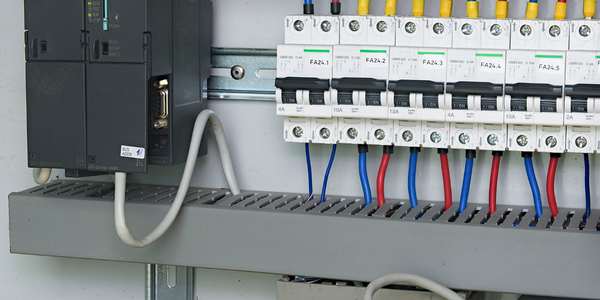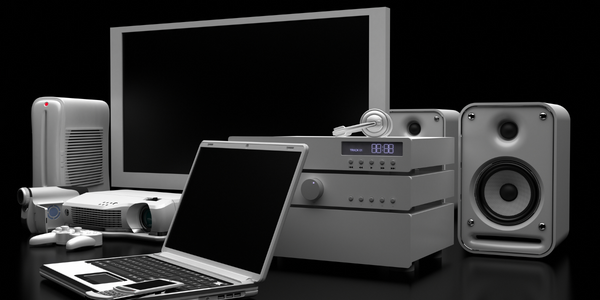Customer Company Size
Mid-size Company
Region
- America
Country
- Canada
- United States
Product
- Kuebix TMS
Tech Stack
- Transportation Management System
Implementation Scale
- Enterprise-wide Deployment
Impact Metrics
- Cost Savings
- Productivity Improvements
Technology Category
- Platform as a Service (PaaS) - Connectivity Platforms
Applicable Industries
- Electronics
Applicable Functions
- Logistics & Transportation
Use Cases
- Supply Chain Visibility
Services
- System Integration
About The Customer
Hyperline Cabling Systems is a North American manufacturer of a comprehensive range of cabling products. The company has a footprint stretching across Canada and the USA. Hyperline continuously strives to remain up to date with industry standards and ahead of the curve with revolutionary products. The company was using a third-party logistics provider (3PL) for their national distribution center in Buford, GA. However, they were dissatisfied with the service and recognized the need to regain control of their logistics operations.
The Challenge
Hyperline Cabling Systems was dissatisfied with their third-party logistics provider (3PL) and recognized the need to regain control of their logistics operations by implementing a transportation management system (TMS). They found that their 3PL would dictate which carriers they could and could not use. This was a problem for Hyperline because not all of the carriers that they wanted to ship with were “approved” carriers. By not being able to choose their desired carriers, Hyperline couldn’t take advantage of lower rates, better service types and price competition. Another deficiency in using a 3PL was the lack of visibility to loads. With the 3PL, some of Hyperline’s loads would be turned into handoff loads, meaning that the carrier that picked up the freight was not the one that delivered it.
The Solution
In May of 2017, Hyperline made the switch to Kuebix TMS, making the Kuebix technology their logistics system of choice for their national distribution center in Buford, GA. Now with Kuebix TMS, Hyperline can add any number of carriers and use the side-by-side comparison feature to choose the rate and service type they need. Since Kuebix is an impartial resource connecting shippers directly and transparently to their carriers, Hyperline can remain confident that they are always making informed decisions. Kuebix provides full tracking information and creates carrier scorecards that can help hold carriers accountable based on their actual performance. By managing their own shipping with Kuebix, Hyperline always has complete visibility to who has their product and can keep their customers feeling confident in their service.
Operational Impact

Case Study missing?
Start adding your own!
Register with your work email and create a new case study profile for your business.
Related Case Studies.

Case Study
Remote Temperature Monitoring of Perishable Goods Saves Money
RMONI was facing temperature monitoring challenges in a cold chain business. A cold chain must be established and maintained to ensure goods have been properly refrigerated during every step of the process, making temperature monitoring a critical business function. Manual registration practice can be very costly, labor intensive and prone to mistakes.

Case Study
Predictive maintenance in Schneider Electric
Schneider Electric Le Vaudreuil factory in France is recognized by the World Economic Forum as one of the world’s top nine most advanced “lighthouse” sites, applying Fourth Industrial Revolution technologies at large scale. It was experiencing machine-health and unplanned downtime issues on a critical machine within their manufacturing process. They were looking for a solution that could easily leverage existing machine data feeds, be used by machine operators without requiring complex setup or extensive training, and with a fast return on investment.

Case Study
Cloud Solution for Energy Management Platform-Schneider Electric
Schneider Electric required a cloud solution for its energy management platform to manage high computational operations, which were essential for catering to client requirements. As the business involves storage and analysis of huge amounts of data, the company also needed a convenient and scalable storage solution to facilitate operations efficiently.

Case Study
Leveraging the IoT to Gain a Competitive Edge in International Competition
Many large manufacturers in and outside Japan are competing for larger market share in the same space, expecting a growing demand for projectors in the areas of entertainment, which requires glamor and strong visual performance as well as digital signage that can attract people’s attention. “It is becoming more and more difficult to differentiate ourselves with stand-alone hardware products,” says Kazuyuki Kitagawa, Director of Service & Support at Panasonic AVC Networks. “In order for Panasonic to grow market share and overall business, it is essential for us to develop solutions that deliver significant added value.” Panasonic believes projection failure and quality deterioration should never happen. This is what and has driven them to make their projectors IoT-enabled. More specifically, Panasonic has developed a system that collects data from projectors, visualizes detailed operational statuses, and predicts issues and address them before failure occurs. Their projectors are embedded with a variety of sensors that measure power supply, voltage, video input/ output signals, intake/exhaust air temperatures, cooling fan operations, and light bulb operating time. These sensors have been used to make the projector more intelligent, automatically suspending operation when the temperature rises excessively, and automatically switching light bulbs. Although this was a great first step, Panasonic projectors were still not equipped with any capability to send the data over a network.









